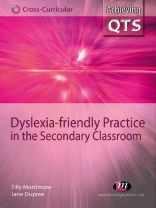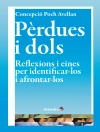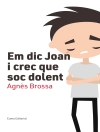The first guide of its kind written specifically for trainee and newly qualified teachers, this standards-based text explores the needs of dyslexic learners in mainstream secondary schools. In light of the current dyslexia-friendly schools initiative, it looks at organisational-level support for dyslexic children, together with pragmatic strategies which teachers can use to support children′s cross-curricular learning. Further, it includes case studies and practical tasks to build readers′ confidence in supporting Specific Learning Difficulties, as well as a range of coping strategies and practical advice, based upon the authors′ experience of working with dyslexic learners in different contexts over many years.
Tabla de materias
Introduction
Section 1: What is dyslexia?
Definitions and theories. What is dyslexia?
Behaviours. What might you notice?
How might you ‘measure’ dyslexia?
Section 2: The role of the teacher
The dyslexia-friendly classroom
The dyslexic reader and writer in the secondary curriculum
Personalising the teaching and learning environment across the curriculum
Working with number and mathematics
Study skills
Section 3: Spreading the load
Working as a team
Managing behaviour
The dyslexia-friendly school
Sobre el autor
Jane Dupree is an education consultant and experienced trainer/practitioner in the development of literacy skills, thinking skills and study skills. Jane has worked with a wide range of schools delivering in-service training as well as developing programmes for Summer Literacy Schools. She is currently working as a consultant with Dyslexia Action as Course Director for the Hornsby Distance Learning Course in the theory, assessment and teaching of students with Specific Learning difficulties/dyslexia. She is also a tutor for those studying at Masters Level. Jane was responsible for the development of the first Dyslexia Unit within Essex LEA for secondary school students, a fully inclusive and successful unit.












